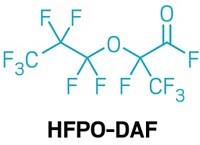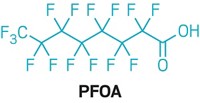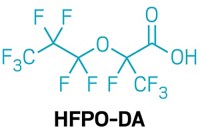Advertisement
Grab your lab coat. Let's get started
Welcome!
Welcome!
Create an account below to get 6 C&EN articles per month, receive newsletters and more - all free.
It seems this is your first time logging in online. Please enter the following information to continue.
As an ACS member you automatically get access to this site. All we need is few more details to create your reading experience.
Not you? Sign in with a different account.
Not you? Sign in with a different account.
ERROR 1
ERROR 1
ERROR 2
ERROR 2
ERROR 2
ERROR 2
ERROR 2
Password and Confirm password must match.
If you have an ACS member number, please enter it here so we can link this account to your membership. (optional)
ERROR 2
ACS values your privacy. By submitting your information, you are gaining access to C&EN and subscribing to our weekly newsletter. We use the information you provide to make your reading experience better, and we will never sell your data to third party members.
Environment
What's In The Rivers?
by Cheryl Hogue
August 11, 2008
| A version of this story appeared in
Volume 86, Issue 32
The Tittabawasee and Saginaw Rivers are tainted with a variety of persistent, chlorinated toxic substances, according to the Michigan Department of Environmental Quality (DEQ). Much of the contamination consists of furans and dioxins released for decades by Dow Chemical's sprawling plant at its Midland, Mich., headquarters.
The mix of contaminants in the rivers can vary depending on where they are found, for instance in the riverbed sediment or floodplain soils versus in animal tissue, DEQ toxicologist Deborah MacKenzie-Taylor says. In addition, the balance of pollutants in soils and sediments or in animal tissue can vary with the location along the rivers.
Nonetheless, the pollution in the rivers shows what regulators call a chemical "fingerprint" that can be traced back to Dow's plant. In soils or sediments that are highly polluted, four chemicals predominate in the area, according to MacKenzie-Taylor and Dow:
Of these, 2,3,4,7,8-pentachlorodibenzofuran and 2,3,7,8-tetrachlorodibenzofuran make up about three-quarters of the pollution.
The four furans are thought to have originated from a type of chlor-alkali production Dow used from the mid- 1890s through the mid-1970s, MacKenzie-Taylor says. Additional dioxins or furans likely came from the manufacture of various chemicals at the Dow plant. These chemicals include chlorobenzenes, chlorophenols (such as pentachlorophenol) and herbicides such as 2,4,5-T (2,4,5-trichlorophenoxyacetic acid), Silvex [2-(2,4,5-trichlorophenoxy)propanoic acid] and 2,4-dichlorophenoxyacetic acid, which was a component of the defoliant agent orange used during the Vietnam War.
Regulators compare the toxicity of furans and dioxins to 2,3,7,8-tetrachlorodibenzo-p-dioxin (TCDD), the most hazardous member of the family of chlorinated dioxins and furans. When examining a sample of pollution, regulators consider which congeners are present and the relative amount of each substance. They then calculate how much TCDD would pose the same hazard as the compounds in the sample, even if no TCDD is present.
Thus, when an agency says a sample has dioxins and furans at, for example, 1,000 ppt, it means that all pollutants present in the sample together have a toxicity equal to TCDD at 1,000 ppt.
According to the World Health Organization, 2,3,4,7,8-pentachlorodibenzofuran is equivalent to 30% of TCDD's toxicity. Meanwhile, 2,3,7,8-tetrachlorodibenzofuran and 1,2,3,4,7,8-hexachlorodibenzofuran each has toxicity that is a tenth that of TCDD, according to WHO. And 1,2,3,7,8-pentachlorodibenzofuran has a toxicity that is 3% of TCDD's.
Cover Story
- Dow's Dioxins
- Saga of pollution, politics, and struggle over cleanup has nationwide implications
- What's In The Rivers?
- The Tittabawasee and Saginaw Rivers are tainted with a variety of persistent, chlorinated toxic substances
- Editor's Page: Cleaning Up Dow's Dioxins






Join the conversation
Contact the reporter
Submit a Letter to the Editor for publication
Engage with us on Twitter